Moving to Find Work
People in the rural areas of the South had always moved from farm to farm and occasionally from farm to city. After 1900, when farm prospects grew worse, people in Tennessee began to move in large numbers from the rural areas to the cities.
Historians agree that rural America underwent dramatic changes from 1900 to 1930. This was especially true in the South where the predominantly rural society was replaced by an urban and industrial one. Migration, moving from one place to another, was an important part of this change.
The outbreak of war and increased industrial and commercial demands provided jobs for these rural migrants. By 1917 when young men were required to register for the draft, draft records in Nashville show that 66 percent of them were migrants from other areas of the state. After the war, when farm prices were depressed, more people moved to the cities.
Women, in particular, saw moving to the city as a means of escaping a difficult family situation or limited social opportunities. retail businesses, like department stores, hired women as clerks. Business offices, after initially using men as clerical workers, started using women for those positions. There was a great demand for women for sales, office, and factory work.
The number of white women working outside the home rose from 17 percent of working age women in 1900 to 27 percent in the 1920s. Nashville figures also showed that 50 percent of African American women worked outside the home. Unlike white women, blacks were forced into domestic jobs such as servants.
Semi-charity homes were set up by religious groups to help women coming to the cities to work. King’s Daughter home in Nashville sought “to provide a respectable residence and decent living conditions for girls whose wages are too small to permit of their otherwise having them.”
Nashville’s Young Women’s Christian Association (YWCA) in 1911 had room for 200 white women and in a separate building, 25 black women. It charged the women $3 to $5 a week for their rooms. Dig Deeper: What do you think women workers in Nashville made a week in the 1920s?
Women who lived in these homes were expected to follow strict behavior rules. Most homes forbid smoking and staying out late at night. Some of the religious homes mandated church attendance.
African American men also migrated to cities looking for work, and they often had to accept semi-skilled or unskilled positions. Nashville records during the early 1900s show that 85 percent of black men worked in those positions compared to 25 percent of whites. This helps explain why blacks moved to the North where it was easier to get skilled positions.
Most migrants to Knoxville were from the countryside of East Tennessee. Others came from the Appalachian areas of Virginia and North Carolina. Because of its central location in the mid-South, Memphis was also the destination of migrants from other states. More than half the people moving to Memphis in the early 1900s, both black and white, were from the state of Mississippi. By 1900 Memphis was the third largest city in the South.
Many of the men who were forced to move to the cities to find work intended to go back to the rural areas. Some did move back, only to have to move to the city again when money was tight.
Some people from rural areas saw city life as worse than country life. A Nashville motorman in the 1920s said the city boys who rode his streetcar to school were “slicked up and pasty faced youngsters” who needed “to do some plowing and I mean plenty of plowing.” Dig Deeper: What do you think he meant?
Picture Credits:
- Photograph of Lydia Whaley spinning. This photo was taken in 1920 in Gatlinburg, Tennessee. Whaley was known as Aunt Liddy and is shown working at her spinning wheel. Pi Beta Phi to Arrowmont Photographic Collection, University of Tennessee.
- Photograph of Ben E. Caruthers riding in a carriage. This photo was taken in 1915 in Lebanon, Tennessee. Caruthers later became a funeral director and a politician. Tennessee State Library and Archives.
- Photograph entitled, “Hogs driven onto a steamboat.” This photo was taken in 1900 in Tennessee. It shows men gathering up hogs and guiding them onto a steamboat to send them off for slaughter. Most of the men are African American. Tennessee State Library and Archives.
- Photograph of two telephone operators. This photo was probably taken in Cookeville, Tennessee sometime between 1920 and 1930. It shows two women near a telephone operating machine. One of the women is wearing a headset. Tennessee Technological University.
- Photograph of a nurse training class. This photo was taken in 1900 at the East Tennessee Industrial School at Livingstone College in Salisbury, North Carolina. It was published in 1903 in the work, Sketch book of Livingstone College and East Tennessee Industrial School. The caption reads, “Some of these nurse have seen service and given the highest satisfaction. There services is in constant demand.” New York Public Library.
- Photograph entitled, “Doing the wash.” This photo was taken in 1900 in Tennessee. It shows an African American woman in the back of a building stirring laundry that is heated over a fire. Clothes can be seen drying on the porch behind her. Tennessee State Library and Archives.
- Photograph showing two apple sellers. This photo was taken in Johnson City, Tennessee in the 1880s. It shows a man and woman standing next to their ox and produce cart. A bustling city street can be seen in the background. Johnsons Depot
Confronting the Modern Era >> Life in Tennessee >> How They Worked >> Moving to Find Work
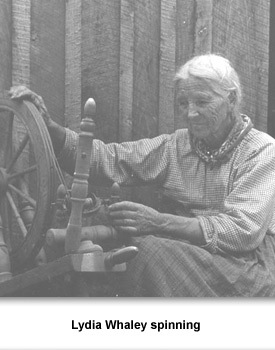
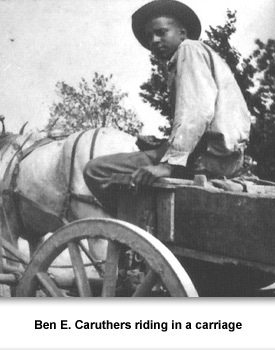
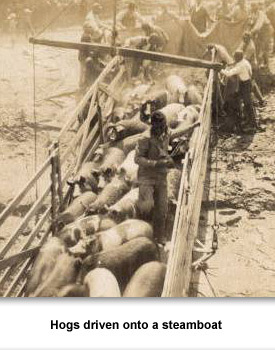
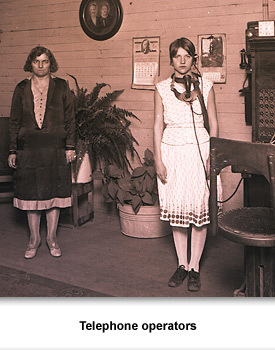
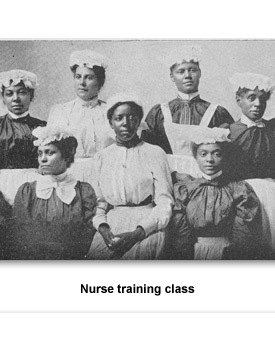
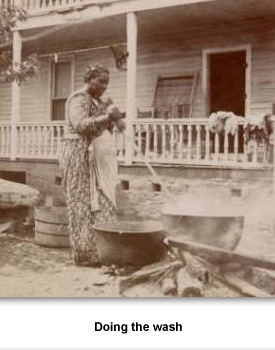
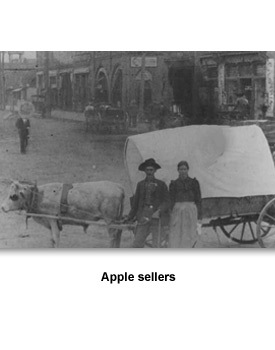
 Sponsored by: National Endowment for the Humanities
Sponsored by: National Endowment for the Humanities